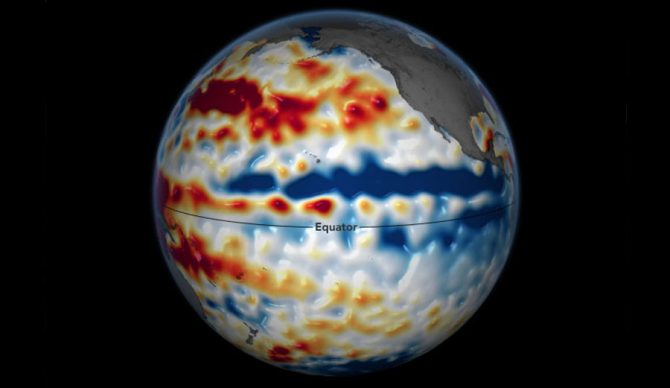In January, 2025, Earth crossed another “warmest month on record” milestone, despite the arrival of La Niña conditions. According to European climate service Copernicus, it was also the 18th of the past 19 months in which the average global temperature was beyond the warming limit of 1.5 C (2.7 F), above pre-industrial times – an international threshold world leaders and climate scientists had hoped to remain under in an effort to curb warming.
The previous hottest January on record was (big surprise) January 2024. January 2025, however, was 0.09 degrees Celsius (0.16 degrees Fahrenheit) warmer despite the presence of La Niña conditions, which typically works to create cooler than typical conditions around the world. This La Niña had been brewing since the end of the 2023-2024 El Niño, and that led most scientists to predict that 2025 would end up being cooler than the previous two years. Although the predictions didn’t follow a hard and fast rule of shifts between El Niño and La Niña, which are fueled by the warming or cooling of the equatorial Pacific Ocean respectively, that had been the trend in past cycles.
All of this has some climate scientists scratching their heads. However, there isn’t even a global consensus on whether or not La Niña has fully developed. The National Oceanic and Atmospheric Administration, for example, declared La Niña’s arrival in early January. Meanwhile, the Australian Bureau of Meteorology doesn’t believe La Niña has formed.
Regardless of that, climate scientists all seem to be on the same page about what’s driving these warming trends month after month: greenhouse gas emissions.
“The basic reason we’re having records being broken, and we’ve had this decades-long warming trend, is because we’re increasing the amount of greenhouse gases in the atmosphere,” Gavin Schmidt, director of Nasa’s Goddard Institute for Space Studies, told the BBC News. “The specifics of exactly why 2023, and 2024, and [the start of] 2025, were so warm, there are other elements involved there. We’re trying to pin those down.”


